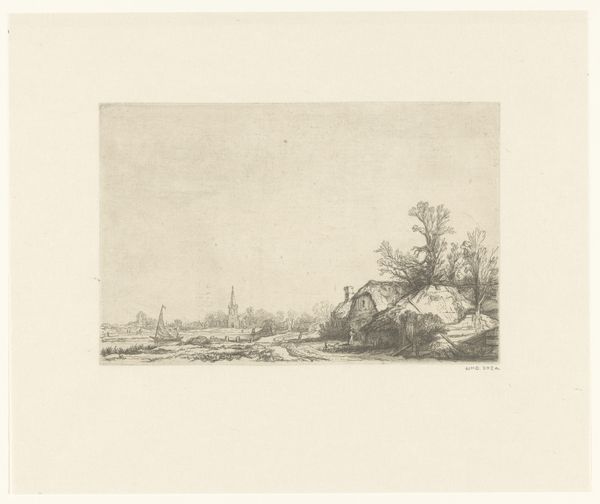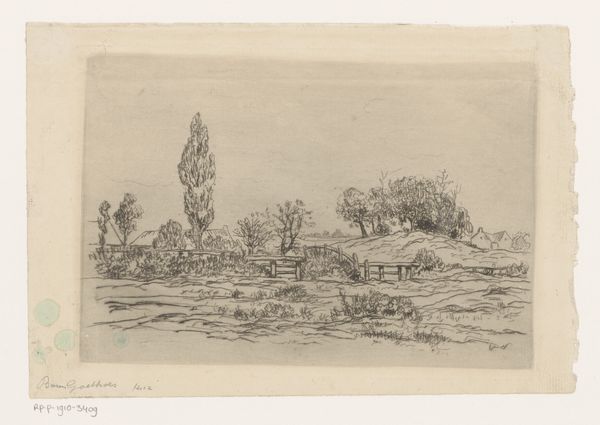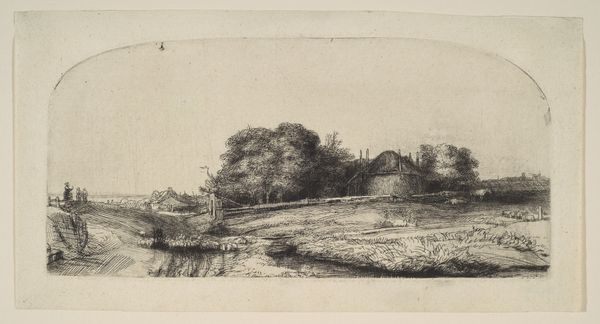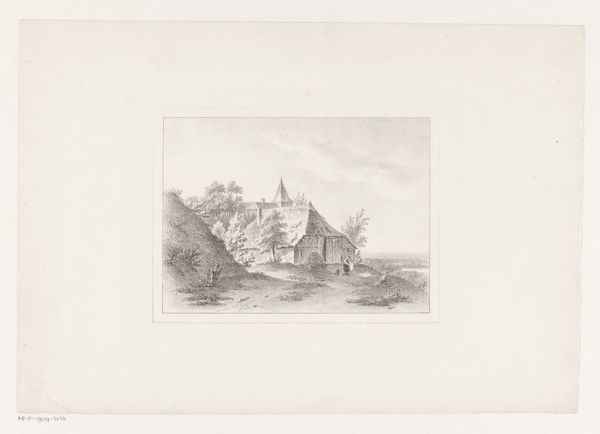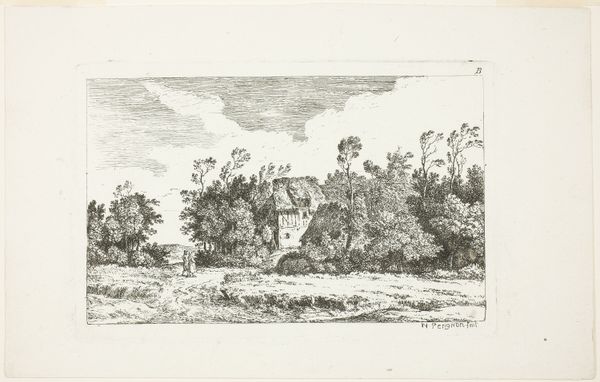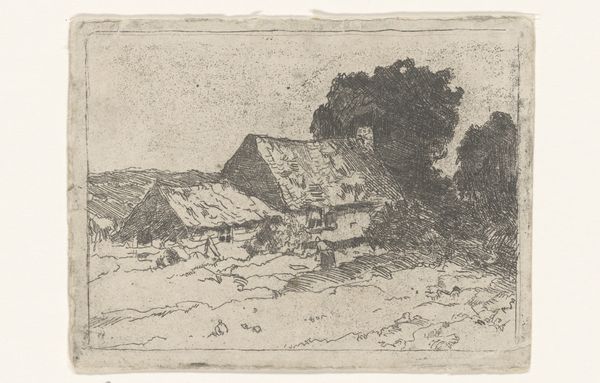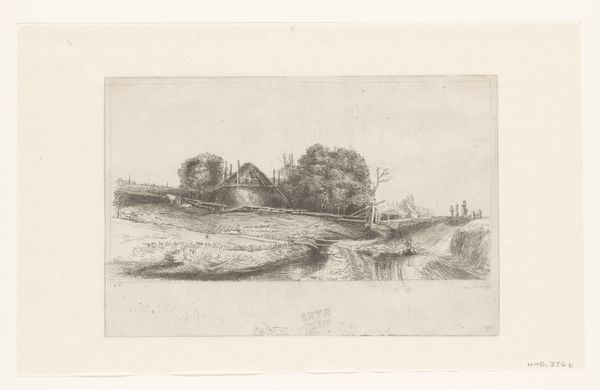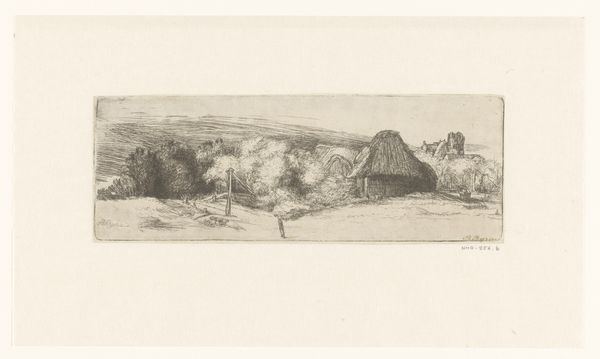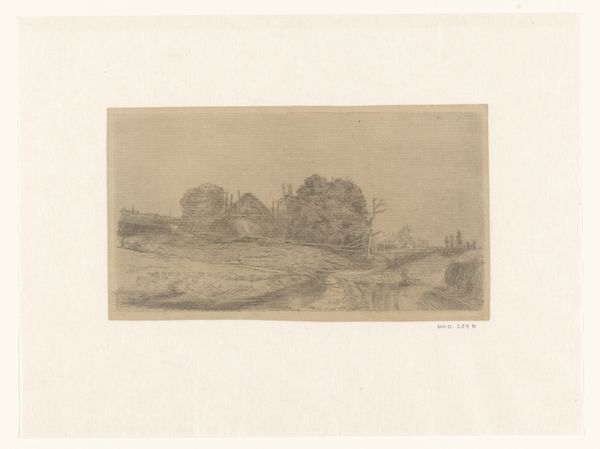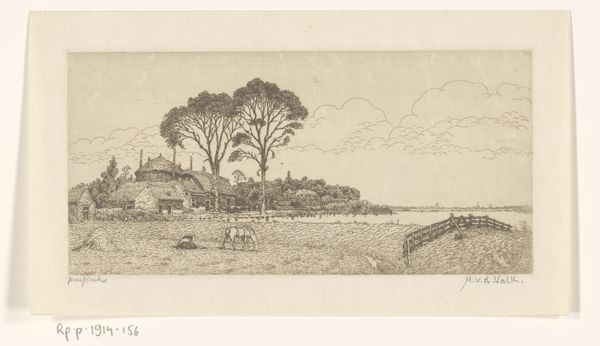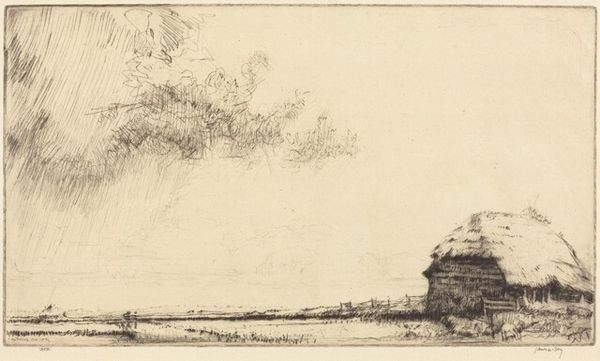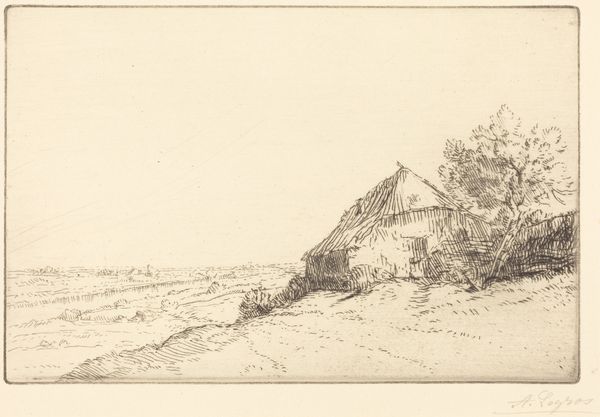
print, etching
# print
#
etching
#
landscape
#
northern-renaissance
#
realism
Copyright: National Gallery of Art: CC0 1.0
Curator: William Strang's "Kilcreggan," an etching from 1897, presents us with a seemingly tranquil rural scene. What’s your initial read of the piece? Editor: Stark and somber. The lack of color combined with the heavy cross-hatching gives it a weighty feel. Look at the texture, the way the lines build to create these almost impenetrable forms, especially in the trees. Curator: I agree. Consider the social context, though. Rural life in the late 19th century was undergoing immense change and hardship, especially for working-class families. The dense, almost claustrophobic composition could reflect anxieties related to land enclosure or economic disparity, common concerns during that time. How does that relate to Northern Renaissance prints, to which Strang was inspired? Editor: Certainly the detail and textures link it, but those prints usually have clear figures and narrative elements to drive them. I would look closer to how Strang arranges positive and negative spaces – it’s quite strategic in drawing your eye to the heart of the clustered buildings. The sky almost disappears in places. Curator: Perhaps, then, the elusiveness of the sky reflects the vanishing promise of agrarian life as industrialisation drew people away from these rural communities, creating labour divides and redefining class structures. What looks picturesque may hold stories of displacement and economic strain. Editor: Interesting take. Although, look at the line work around the central cottage—the etching creates a sense of depth and volume that contradicts any sense of overcrowding you described. It's as though the buildings are placed as forms existing against the sky and land. The line emphasizes an enduring composition. Curator: The print may reflect both. A celebration of the landscape alongside the acknowledgement of an impermanent way of life—reflecting a shift towards urban centers and the tensions inherent in such transitions. Editor: Seeing it like that, as this tension between form and socio-historical forces, it creates a whole other dimension to experience within Strang's work. Curator: Precisely! Approaching art from various lenses allows us to connect to narratives otherwise concealed in favor of immediate aesthetic readings.
Comments
No comments
Be the first to comment and join the conversation on the ultimate creative platform.
